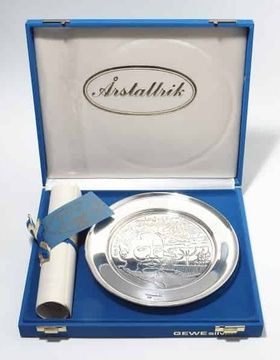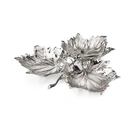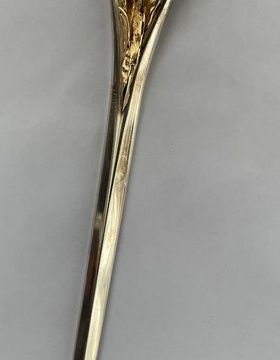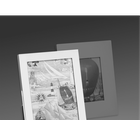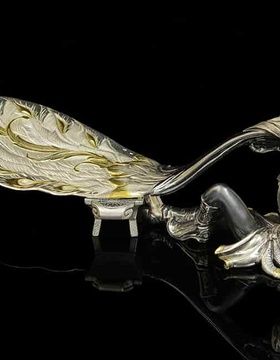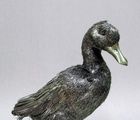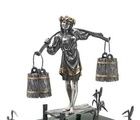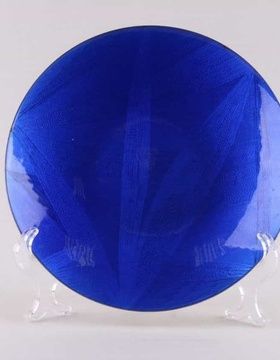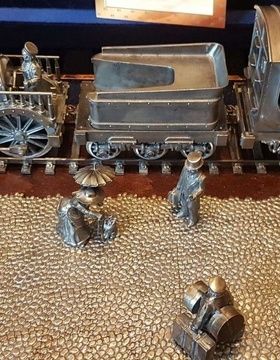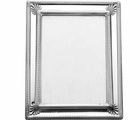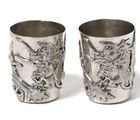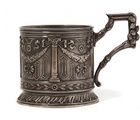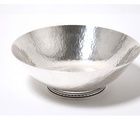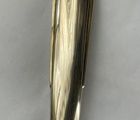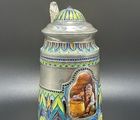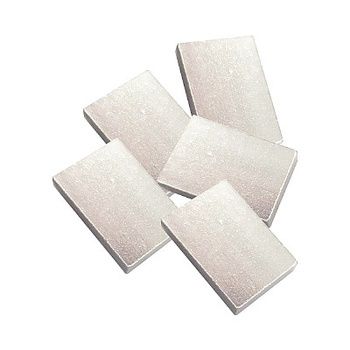
Проба любого драгоценного металла свидетельствует о его процентном содержании в 1000 граммах сплава. Натуральному серебру свойственна высокая мягкость и поэтому в материал, из которого изготовляют разного рода изделия, добавляют примеси.
Серебро представлено в таких пробах:
999 – чистый металл;
960 – самая высокая маркировка;
925 – наиболее распространенная, из нее изготавливают украшения;
875 – проба бытового серебра;
830 – применяется для изготовления посуды;
800 – используется для столовых приборов.
Серебро ниже 800 маркировки не маркируется и считается недрагоценным металлом.
800 проба
Состав: 80% драгоценного металла; 20% лигатура. Положительные качества: высокая прочность; отличные литейные качества. Отрицательные качества: быстрое окисление; желтоватый оттенок.
830 маркировка
Почти аналогична 800, но в составе имеет немного больше благородного металла. Эти маркировки не используются в ювелирном деле, а в большей степени идут на изготовление посуды и столовых приборов.
875 маркировка
Имеет следующий состав: 87,5% благородного металла; 12,5% другие металлы. Преимущества: сравнительно высокое содержание благородного металла; невысокая стоимость ювелирных изделий; высокая прочность. Недостатки: невозможность исполнения тонкой ювелирной работы (из-за повышенной прочности).
Проба 925
Самая востребованная в ювелирном деле. Преимущества: чистый блеск, характерный серебру; широкий художественный выбор; хорошо сохраняет свою форму. Недостатки: мягкость. Маркировка 960 Имеет очень похожие характеристики с 925 пробой, но практически не окисляется и не чернеет.
Самыми популярными видами этого благородного металла являются: стерлинговое; сусальное; филигранное; матовое; черненое; монетное.
Стерлинговое серебро – из него в Великобритании чеканили фунты стерлинги до момента появления евро. Имеет маркировку 925.
Сусальное – очень тонкий серебряный лист, который обычно имеет наивысшую пробу и легко сплавляется с различными материалами. Выполняет такие функции: защитную; антикоррозийную; эстетическую. Поэтому такой вид драгоценного материала используют для оформления церковных интерьеров, покрытия мебели и лепнины.
Филигранное – в большом почете у ювелиров, которые изготавливают из него настоящие шедевры, иногда тоньше человеческого волоса.
Сплав такого серебра обладает высокой прочностью. Черненое – когда-то считалось оберегом, которому приписывали много магических характеристик. Вырабатывается такой вид металла с помощью черни, в состав которой входит свинец и медь. Они нагреваются на поверхности серебра и предают черный оттенок изделиям.
Оксидированное – покрыто тонким оксидным слоем, иногда оксидной пленкой. Эти покрытия защищают металл от дальнейшего окисления.
Матовое – покрыто слоем эмали, что придает очень красивый вид продукту. Славится своей прочностью.
Монетное – сплав, который используется для чеканки монет. Какие бывают пробы серебра Цены Для расчета стоимости серебра, зависимо от пробы, необходимо знать цену за один грамм этого драгоценного металла в чистом виде.
Клеймо
На каждое изделие из драгоценного металла наносится маркировка, которая состоит из: государственное пробирное клеймо; клеймо изготовителя; ярлык. Государственное клеймо Государственное клеймо – это проба, которая ставится государственной инспекцией пробирного надзора и может быть нанесена на продукт следующими способами: механическим (оттиск); современным (лазерный метод или электроискровой). Клеймо меняло свой вид: в 1958 году начали изображать серп и молот на фоне звезды; с 1994 года – в виде профиля женской головы в кокошник.
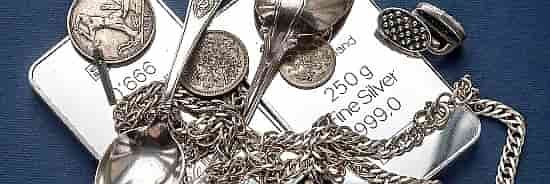 Форма же оставалась такой же – круг и продолговатый бочонок. Клеймо изготовителя Клеймо изготовителя – именник, ставится на все драгоценные изделия должен быть заключен единым контуром. Имеет четыре заглавных буквы, которые обозначают три символа, а именно: код года (А-2001; Б- 2002 и так далее); код территориального нахождения отдела инспекции пробирного надзора (к примеру Л- г. Санкт – Петербург, Северно-западная инспекция); код подразделения.
Форма же оставалась такой же – круг и продолговатый бочонок. Клеймо изготовителя Клеймо изготовителя – именник, ставится на все драгоценные изделия должен быть заключен единым контуром. Имеет четыре заглавных буквы, которые обозначают три символа, а именно: код года (А-2001; Б- 2002 и так далее); код территориального нахождения отдела инспекции пробирного надзора (к примеру Л- г. Санкт – Петербург, Северно-западная инспекция); код подразделения.
Ярлык
Ярлык – официальный документ, который имеет размеры: 25 х 35 и 25 х 50 мм., и информацию на обеих сторонах. Крепится к изделию с помощью пломбы и нити. Согласно законодательству, изготовитель в ответе за всю информацию, которая представлена на ярлыке.
Правильный выбор серебра
При покупке драгоценного металла в первую очередь нужно определится с какой целью совершается это действие, а уже потом стоит следовать нескольким правилам, которые помогут совершить верный выбор: приобретать серебро лучше только в официальных ювелирных лавках; проверить, не выходя из магазина наличие пробы, пробирного клейма; лучше выбирать модели с обозначением «Zinc free» (без цинка), вредное действие которого доказано; самой оптимальной пробой изделия является 925.
Имитация серебра
Подделки этого вида благородного металла встречаются не так часто, как золота, но все-таки риск приобрести подделку существует. Под видом серебра предлагают изделия: с очень низким содержанием этого материала; украшения, покрыты тончайшим серебряным слоем. Если терзают сомнения, насчет подлинности покупки, то проверить настоящее ли серебро можно в домашних условиях: с помощью воздействия тепла (серебро замечательно проводит тепло и мгновенно нагревается); испытание иголкой – провести по изделию иголкой (при подлинности, на изделии не останется следа); проверка йодом – попадая на серебряную поверхность, не должен изменить ее цвет; воздействие на мел – только серебро оставляет на нем следы. Уход за серебром Иногда изделия из этого благородного материала меняют свой внешний вид, это связано с: неправильной эксплуатацией украшений; несвоевременной чисткой;
Правила носки серебряных украшений: снимать изделия при занятии физическими нагрузками и процедур физиотерапевтического и косметического характера; периодическая чистка украшений (в среднем один раз в месяц).
Методы самостоятельной очистки изделий без драгоценных камней:
С помощью 150 миллилитров мыльного раствора с добавлением пары капель нашатыря. После двадцати минут замачивания. Промыть проточной водой и вытереть мягкой тряпкой;
Полоскание в одном литре содового раствора (50 г. соды); Украшения, покрытые эмалью, требуют очистки ватным тампоном, пропитанным смесью из зубного порошка и нескольких капель нашатырного спирта. Уход за украшениями с камнями: ватную палочку смачивают в глицерине или одеколоне и осторожно протирают камень. Украшения, покрыты эмалью, протирают ватными тампонами, пропитанными нашатырным спиртом и зубным порошком.
Столовые приборы могут очищаться дома: следует тщательно мыть в воде с содой; кипятить на протяжении 15 минут в воде с добавлением фольги; в литр кипятка с добавлением измельченной скорлупы из двух яиц помещают серебро и держат двадцать минут; поместить в картофельный отвар на десять минут; кипятить серебро в кока-коле пять минут. После всех перечисленных процедур изделия промывают под проточной водой и убирают влагу мягкой тканью.
